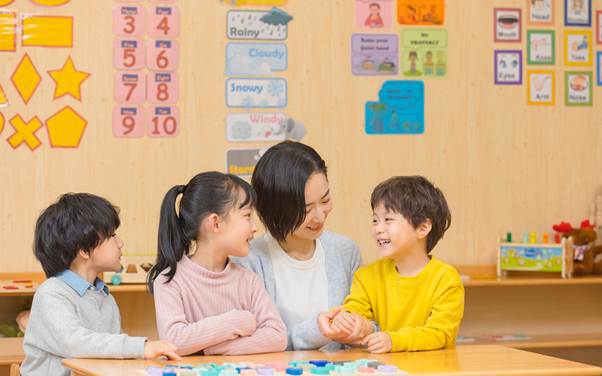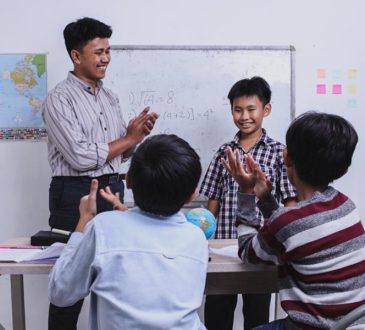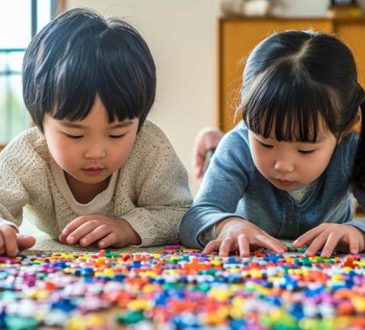
Montessori education continues gaining recognition worldwide, including in Singapore. While several preschools follow structured teaching formats, a Montessori preschool in Singapore adopts a distinctive approach focused on independence, hands-on learning, and respect for a child’s natural development. Understanding what sets this method apart helps parents make informed choices about early education.
Structured Learning Through Independence
Montessori preschool in Singapore encourages independence from day one. Instead of using rigid timetables or teacher-led routines, the Montessori model promotes self-directed activity. Children learn by choosing tasks based on interest. Teachers observe and guide only when necessary. The focus stays on letting children work at their own pace.
Each classroom features carefully arranged learning materials. Children use these independently without waiting for instruction. The environment stays quiet and calm, encouraging focus. Montessori kindergarten in Singapore allows children to engage in uninterrupted work cycles. These sessions build concentration, confidence, and decision-making skills early on.
Unlike traditional schools where teachers lead lessons in groups, Montessori preschool promotes one-on-one and small group engagement. Teachers introduce materials individually, ensuring every child understands the use. Activities repeat until mastery, not just completion. This method reinforces consistency and internal satisfaction rather than external reward.
Children become responsible for their learning. They clean up after themselves, maintain their workspaces, and take ownership of progress. These habits foster responsibility and self-motivation without pressure or comparison.
Unique Curriculum Based on Sensory Exploration
Preschool curriculum in Singapore varies, but Montessori preschools follow a sensory-based structure. The curriculum revolves around five main areas: Practical Life, Sensorial, Language, Mathematics, and Culture. Each one uses hands-on materials to connect abstract ideas with tangible experiences.
In the Practical Life area, children practise real-life skills. Activities like pouring, buttoning, or sweeping improve motor coordination. These exercises support independence while also strengthening attention to detail.
Sensorial activities refine the five senses. Montessori kindergarten in Singapore uses tools that isolate individual qualities such as colour, weight, texture, or sound. These exercises prepare children for abstract thinking required later in subjects like maths or science.
Language and Maths lessons follow similar hands-on principles. Children trace sandpaper letters, use movable alphabets, or build sentences from word cards. Montessori students explore quantities using bead chains and number rods. These materials help internalise concepts without relying on memorisation.
Cultural studies expand the child’s understanding of geography, science, art, and music. Montessori education integrates these into daily routines. Rather than treating them as separate topics, they become part of the child’s natural environment and curiosity.
Purpose-Driven Teaching Methods
Montessori teachers receive specialised training. They understand how to observe without interference and how to present materials precisely. Their role focuses on helping children discover concepts, not deliver information.
Each child receives individualised attention. Teachers prepare the classroom based on children’s interests and developmental stages. Daily observations help identify readiness rather than following strict milestones or rigid curriculum plans.
The Montessori preschool curriculum in Singapore encourages lifelong learning habits. Children remain engaged because they find learning meaningful. There’s no race to cover topics or compete for top marks.
Instead of using stickers, praise, or punishment, Montessori teachers let progress itself become motivation. Children feel satisfied through mastery, not rewards. This instils inner discipline and builds confidence that carries through to primary education and beyond.
Multi-Age Classrooms Encouraging Peer Learning
Montessori preschools in Singapore feature mixed-age classrooms. Children usually work in age bands spanning three years, such as ages 3 to 6. This model supports peer teaching and cooperation without competition. Older students guide younger ones, reinforcing their own knowledge through demonstration.
Younger children observe older peers. They watch routines, listen to discussions, and gain exposure to more advanced materials. This indirect preparation removes the pressure to perform and replaces it with natural motivation.
Traditional preschools group children strictly by age. Lessons match developmental expectations but limit opportunities for observational learning. Montessori schools trust children to progress based on readiness, not age or grade level.
This dynamic fosters empathy, patience, and communication. Children become aware of how their behaviour affects others. They practise leadership without being forced into roles. Teachers step in as facilitators, managing progress through daily observation rather than frequent assessments.
The result is a classroom culture rooted in collaboration, not competition. Montessori students learn to respect different skill levels while working side by side.
Calm Environment Designed for Focus
The Montessori classroom stays intentionally calm, ordered, and child-sized. Low shelves, accessible tools, and defined work areas reduce distractions. Materials stay in excellent condition, inviting care and mindfulness.
Children move freely but purposefully. They choose activities, complete them, return them to place, and then move on. No bells, loud announcements, or rigid transitions interrupt their flow.
Montessori kindergarten in Singapore invests in environments that support autonomy. Everything remains within the child’s reach and scaled to their size. Tables, sinks, shelves, and chairs match the child’s height to encourage ownership.
This design helps children feel secure and respected. Rather than relying on external control, they regulate their own movements and choices. Teachers only step in when necessary, allowing natural development of self-discipline.




